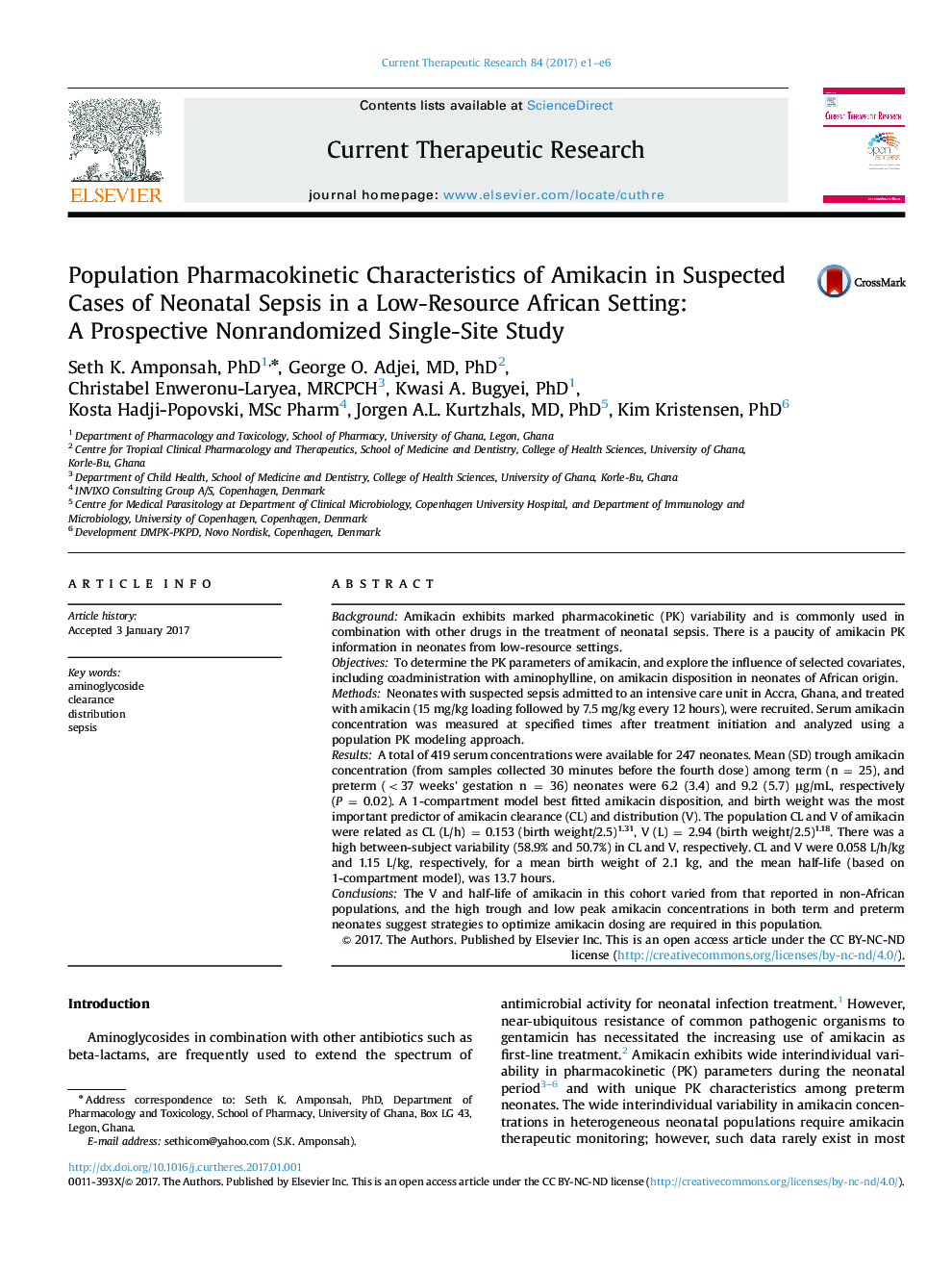| کد مقاله | کد نشریه | سال انتشار | مقاله انگلیسی | نسخه تمام متن |
|---|---|---|---|---|
| 5723130 | 1608965 | 2017 | 6 صفحه PDF | دانلود رایگان |
BackgroundAmikacin exhibits marked pharmacokinetic (PK) variability and is commonly used in combination with other drugs in the treatment of neonatal sepsis. There is a paucity of amikacin PK information in neonates from low-resource settings.ObjectivesTo determine the PK parameters of amikacin, and explore the influence of selected covariates, including coadministration with aminophylline, on amikacin disposition in neonates of African origin.MethodsNeonates with suspected sepsis admitted to an intensive care unit in Accra, Ghana, and treated with amikacin (15 mg/kg loading followed by 7.5 mg/kg every 12 hours), were recruited. Serum amikacin concentration was measured at specified times after treatment initiation and analyzed using a population PK modeling approach.ResultsA total of 419 serum concentrations were available for 247 neonates. Mean (SD) trough amikacin concentration (from samples collected 30 minutes before the fourth dose) among term (n = 25), and preterm (<37 weeks' gestation n = 36) neonates were 6.2 (3.4) and 9.2 (5.7) µg/mL, respectively (P = 0.02). A 1-compartment model best fitted amikacin disposition, and birth weight was the most important predictor of amikacin clearance (CL) and distribution (V). The population CL and V of amikacin were related as CL (L/h) = 0.153 (birth weight/2.5)1.31, V (L) = 2.94 (birth weight/2.5)1.18. There was a high between-subject variability (58.9% and 50.7%) in CL and V, respectively. CL and V were 0.058 L/h/kg and 1.15 L/kg, respectively, for a mean birth weight of 2.1 kg, and the mean half-life (based on 1-compartment model), was 13.7 hours.ConclusionsThe V and half-life of amikacin in this cohort varied from that reported in non-African populations, and the high trough and low peak amikacin concentrations in both term and preterm neonates suggest strategies to optimize amikacin dosing are required in this population.
Journal: Current Therapeutic Research - Volume 84, 2017, Pages e1-e6
